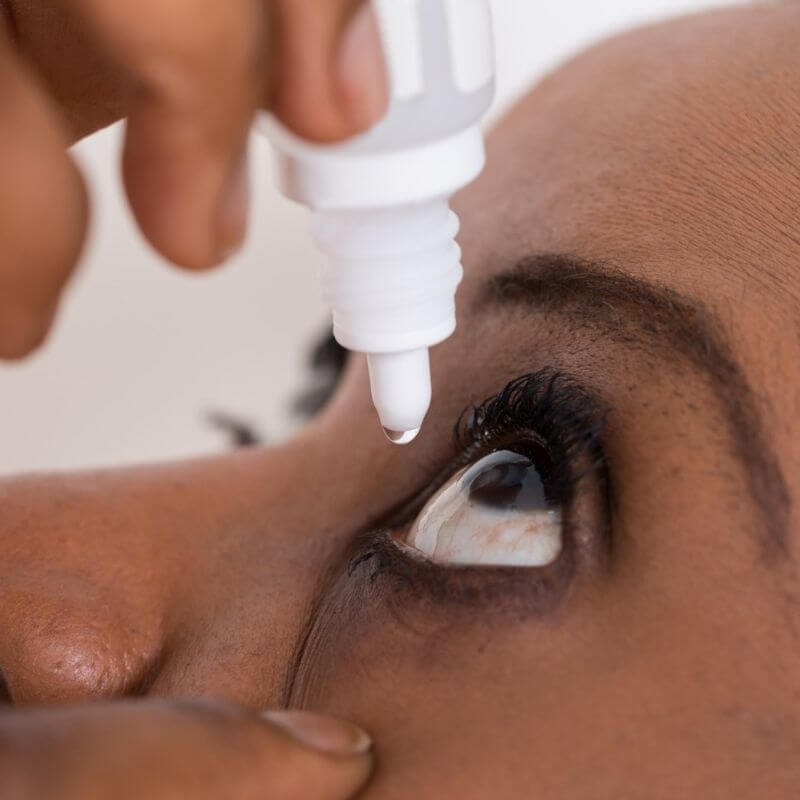Good vision is an essential tool for doing a great job at work. You need to be able to see your tasks clearly, use your eyes comfortably, and also keep them safe from harm as you perform your job.
Here are 5 steps you can take to maintain good vision at work:
1 – Know the hazards in your environment
The first step to maintaining good vision at work is identifying the hazards your eyes are exposed to.
If you work in an organization that abides by work health and safety regulations, an eye hazard assessment may have been done.
Eye hazards are materials or situations that cause (or put your eyes at risk of) strain, injuries, infections, or other forms of harm. Knowing them will help you take the right steps to protect your vision.
To identify these hazards, learn about your job requirements and assess your work environment for potential causes of harm.
- What are the tools you work with? Are they safe or do they pose a risk to your eyes?
- Where do you perform your job? Is it safe or are there potential causes of harm in the environment?
- How do you perform your job? What what processes do you follow? Do they pose a risk to your eyes?
- When and how often do you perform the job? The risk of harm from a job increases as the number of times it is done increases. So, if a job exposes your eyes to danger and you need to do it a lot more times, you need to take precautions seriously.
2 – Make your environment safer
You can make your work environment safer for your eyes in the following ways:
- Remove the eye hazards in your environment: This is usually the most effective way to make the environment safer; but, sometimes it is not possible to do so. This is because some of the eye hazards are your work tools and conditions under which you work. For instance, looking at computer screens pose a risk of eye strain, but it is not possible to eliminate them because they are essential work tools.
- Improve your work tools and environment: When it is not possible to eliminate an eye hazard, you may be able to adapt it or install features that make it safer for your eyes. For instance, to reduce the risk of eye strain due to computer use, you can adjust your computer screen settings or use anti-glare screen covers. To improve your work environment, you can rearrange your work station or install window blinds to eliminate the external sources of light reflections (if any).
3 – Ensure that you meet the vision requirements for your job
There are vision requirements for every job. Meeting these requirements ensures that you can see your job tasks clearly and can do them comfortably and well enough, without causing any harm to yourself or others around you.
To meet your vision requirements, do the following.
- Get a comprehensive eye examination and occupational vision assessment done at recommended intervals. We recommend that you get a comprehensive eye check done once every year or two depending on your age and eye health risks. This should be done even if you do not have any problems with your vision. Comprehensive eye check can help detect sight-threatening eye problems that do not give warning signs. This will allow you to start treatment before any damage is done to your vision. Occupational vision assessment, on the other hand, is best done before starting a new job. It helps detect and correct any eye problems that can interfere with your ability to do your job well. It is also useful for determining the type of eye protection you need for your job. If you already started a job without an occupational vision assessment, you can still get it done. Eye problems that interfere with work performance can develop at any time, and it can also take a while before they start to affect your job significantly.
- Use the appropriate vision correction and eye protection for your job: Depending on the outcome of your eye check and vision assessment, you may need to correct your vision and also get protective eyewear. There are many options available. Vision correction options include eyeglasses (with or without vision enhancement coatings and features), contact lenses, and surgery while the options for eye protection include safety glasses, safety goggles, welding helmets, and face shields. Ensure that you go for the right options. The wrong ones can increase your risk of eye discomfort, injuries, and decreased work performance.
We can help you meet the vision requirements for your jobs. We perform comprehensive eye checks and occupational vision assessments. We also offer various vision correction and eye protection options and can recommend the one most suitable for you. Contact us for more details.
4 – Practice good eye health and safety habits
Beyond the physical eye hazards, your behavior and habits can pose a risk to your eye health and safety at work. To minimize your risks, do the following;
- Maintain good hand hygiene: Dirty hands can transfer germs to the eyes and cause infections. To reduce your risk of infections, wash your hands regularly. Also, avoid rubbing your eyes; but if you can’t help it, ensure you do so with clean hands
- Adopt healthy screen habits: A well set up workstation is just a part of what is required to maintain eye comfort in front of your screen. Your habits also have a significant impact on your vision. Here are key habits that will help you avoid digital eye strain and maintain good vision:
- Conscious blinking: Blinking, usually, is a reflex action that helps lubricate the surface of the eyes. When using a computer, you are likely to blink less often. This makes the surface of the eye dry and uncomfortable. To avoid this, make a conscious effort to blink frequently.
- Practicing the 20-20-20 rule: This means that after every 20 minutes of computer use, you should look away from your screen and focus on an object 20 feet away for 20 seconds. This helps to relax the eyes intermittently during computer use.
- Taking breaks away from your desk: In addition to looking away from your screen every 20 minutes, from time to time (e.g. every hour), get up from your seat and move around. In addition to relaxing your eyes, it can help relieve muscle discomfort associate with eye strain.
5 – Be prepared for eye emergencies
Eye emergencies are eye conditions that require urgent medical attention to prevent or reduce discomfort and vision loss. They include foreign body in the eye, eye injuries, glaucoma, retinal detachment, sudden loss of vision, etc.
No matter the amount of precautions you take to protect your eyes at work, there is still a little chance that eye problems may arise. It becomes tricky if these problems require urgent attention to prevent damage to your vision. Therefore, it is necessary to be prepared to respond to eye emergencies. Here are ways you can prepare:
- Learn first aid procedures for common eye injuries like blows to the eye, chemical burns, etc. Click here to learn more.
- Know where the first aid box and eyewash station or tap is in your workplace.
- Have the contact of the nearest eye clinic you can reach in the event of an eye emergency.
Your organization may have an emergency response plan in place. Find out what the plans are especially as it pertains to your eye health and safety.
There you have it, the 5-step to ensuring that you maintain good vision at work.
From experience, people tend to pay less attention to the last step – preparing for eye emergencies. If you have not taken any steps to plan for eye emergencies, do that now. Accurate and timely response in the event of an eye emergency can make the difference between recovering fully or going blind.


